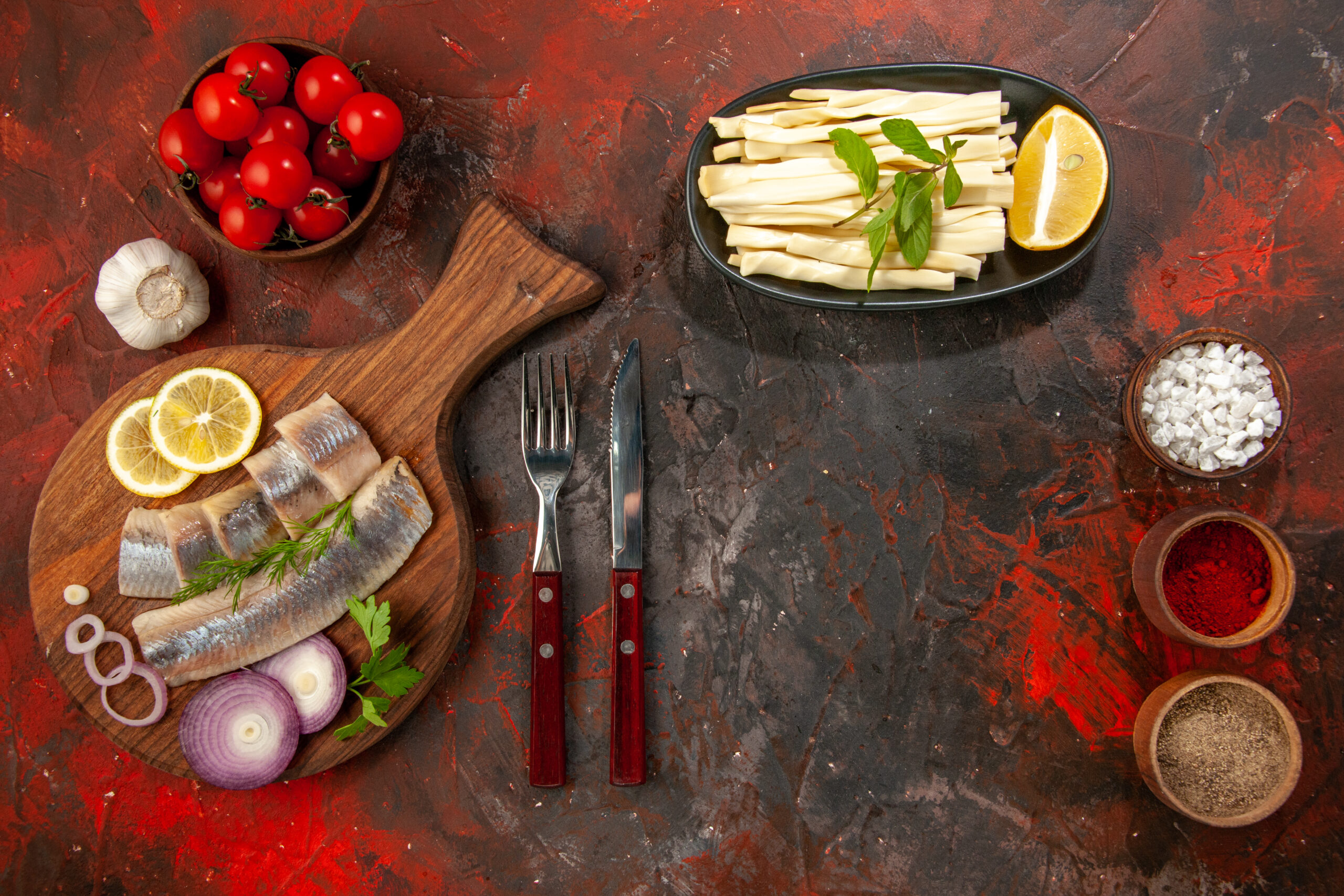Step-by-Step Homemade Fish Food Recipes
Now that you know what ingredients to use, let’s dive into some easy-to-make fish food recipes. These recipes are simple to prepare, packed with nutrients, and can be frozen for later use.
Recipe 1 – Simple Fish Food Patties (For Carnivorous Fish)
| Ingredients | Quantity |
|---|---|
| Fish fillets (fresh) | 1 cup |
| Shrimp (fresh or frozen) | ½ cup |
| Fish oil | 2 tbsp |
| Gelatin (unflavored) | 2 tbsp |
| Fresh spinach | 1 tbsp |
| Water | ¼ cup |
Preparation Steps:
- Start by blending the fish fillets and shrimp together until smooth. You can use a food processor or a blender for this.
- Boil the spinach until it’s soft, then blend it together with the seafood mixture.
- Add the fish oil and gelatin, mixing everything together until smooth. The gelatin helps hold the mixture together.
- Pour the mixture into ice cube trays or silicone molds for easy portioning.
- Place the trays in the freezer and let them set. Once frozen, you can store the patties in a freezer-safe bag for future use.
Recipe 2 – Homemade Veggie Mix (For Herbivorous and Omnivorous Fish)
| Ingredients | Quantity |
|---|---|
| Peas (frozen or fresh) | ½ cup |
| Carrots (chopped) | ½ cup |
| Zucchini (chopped) | ½ cup |
| Spirulina powder | 1 tsp |
| Fish food gel base (optional) | 2 tbsp |
Preparation Steps:
- Steam the peas, carrots, and zucchini until soft. This will make them easier to blend into a smooth paste.
- Blend the vegetables into a smooth paste using a food processor.
- Add the spirulina powder to the vegetable mix and stir well. Spirulina provides important minerals and boosts the immune system.
- If desired, you can add a fish food gel base to help hold the mixture together.
- Once mixed, shape the food into small patties or cubes. Freeze them for later use.
How to Store Homemade Fish Food
Homemade fish food requires proper storage to maintain its freshness and nutritional value. Here’s how to keep your homemade fish food at its best:
Freezing for Long-Term Storage
To keep your homemade fish food for a longer period, freezing is your best option:
- Store food in individual portions to make feeding easier.
- Use ice cube trays or silicone molds to shape the food into bite-sized pieces.
- Wrap each portion in plastic wrap or place them in freezer bags to prevent freezer burn.
Refrigeration Tips
If you plan to use the food within a few days, refrigeration is a good option:
- Store small portions of food in airtight containers in the refrigerator.
- Make sure to consume the refrigerated food within 2-3 days for maximum freshness.
Shelf Life of Homemade Fish Food
- Frozen Fish Food: Will last up to 6 months in the freezer if stored correctly.
- Refrigerated Fish Food: Should be consumed within 1-2 weeks to maintain its nutritional quality.
Best Practices for Feeding Your Fish Homemade Food
To ensure your fish stay healthy and happy, it’s important to follow some basic feeding guidelines:
Feeding Frequency
- Young Fish: Feed them 2-3 times per day. Young fish are growing rapidly and need more frequent meals.
- Adult Fish: Once or twice a day is usually sufficient. Overfeeding can lead to water quality problems, so feed only what your fish can eat within 5 minutes.
Variety is Key
- Rotate Recipes: Offering different homemade food options ensures that your fish get a balanced diet with all the essential nutrients.
- Include Proteins, Vegetables, and Omega-3s: Make sure that your recipes include a mix of proteins, vegetables, and healthy fats to provide a complete diet.
Observe Your Fish’s Response
- Keep an eye on your fish’s behavior and physical condition. If you notice changes in their color, energy levels, or appearance, it may be time to adjust their diet.
Common Mistakes to Avoid When Making Homemade Fish Food
Even the most experienced fish owners can make mistakes when preparing homemade food. Avoid these common pitfalls:
- Not Using Enough Variety: Offering the same food every day can lead to nutritional imbalances. Make sure to rotate recipes.
- Overfeeding: Overfeeding can lead to bloated fish and water quality issues. Feed your fish only as much as they can eat in a few minutes.
- Not Freezing Properly: Ensure that homemade food is properly stored to avoid freezer burn and nutrient loss.
Conclusion
Homemade fish food is a fantastic way to ensure your fish are getting the best nutrition possible. With a little effort, you can create nutritious, delicious meals that promote vibrant health and stunning colors in your aquatic friends. Whether you have carnivorous, herbivorous, or omnivorous fish, there’s a homemade recipe that’s perfect for their needs.
So, roll up your sleeves, get into the kitchen, and start making fish food that will keep your aquatic companions happy and healthy for years to come. Your fish will thank you for it!

